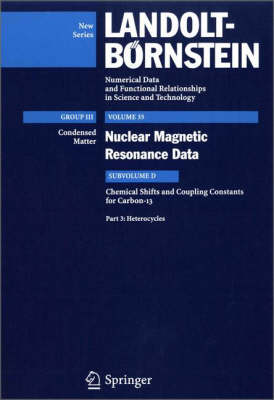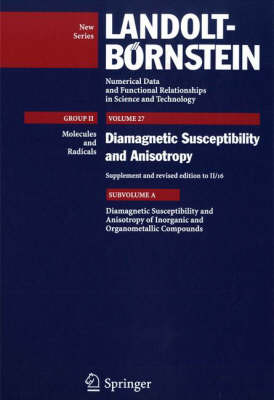Landolt-Boernstein: Numerical Data and Functional Relationships in Science and Technology - New
2 total works
35D3
Nuclear Magnetic Resonance (NMR) is based on the fact that certain nuclei exhibit a magnetic moment, orient by a magnetic field, and absorb characteristic frequencies in the radiofrequency part of the spectrum. The spectral lines of the nuclei are highly influenced by the chemical environment i.e. the structure and interaction of the molecules. NMR is now the leading technique and a powerful tool for the investigation of the structure and interaction of molecules. The present Landolt-Börnstein volume III/35 Nuclear Magnetic Resonance (NMR) Data is therefore of major interest to all scientists and engineers who intend to use NMR to study the structure and the binding of molecules. Volume III/35 ''NMR-Data'' is divided into several subvolumes and parts. Subvolume III/35A contains the nuclei B-11 and P-31, subvolume III/35B contains the nuclei F-19 and N-15, subvolume III/35C contains the nucleus H-1, subvolume III/35D contains the nucleus C-13, subvolume III/35E contains the nucleus O-17, and subvolume III/35G contains the nucleus Se-77. More nuclei will be presented later.
27A
Diamagnetic Susceptibility and Anisotropy of Inorganic and Organometallic Compounds
by M. Jain, A. Gupta, M. Kumar, and R. Gupta
The volume II/27A has been divided into three subvolumes according to the classes of compounds:
Subvolume A: Diamagnetic susceptibility and magnetic anisotropy of inorganic and organometallic compounds; Subvolume B: Diamagnetic susceptibility of organic compounds (Part 1); Subvolume C: Diamagnetic susceptibility and magnetic anisotropy of organic compounds (Part 2).
The data presented in this volume are based on the literature survey of the chemical abstracts up to 2005.

